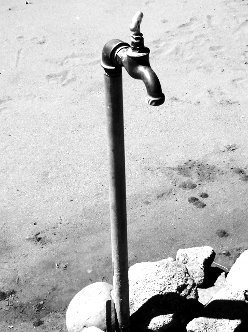Katherine spikes outlined
 More details have emerged about PFAS chemical levels in Katherine's water supply.
More details have emerged about PFAS chemical levels in Katherine's water supply.
The toxic chemicals are linked to the historic use of firefighting foams at the nearby Tindal RAAF Base.
Media investigations have uncovered details of four occasions when average PFAS chemical levels in Katherine's water supply breached national guidelines.
One sample was double recommended limits.
Katherine is under water restrictions because the city’s bore water, which is added to drinking supplies during the dry season, contains high levels of PFAS chemicals.
National guidelines require PFAS levels below 0.07 micrograms per litre, but the new data shows some PFAS levels in Katherine were recorded at 0.14 micrograms per litre.
Previous investigations by the Power and Water Corporation had revealed the town’s water supply had elevated levels of PFAS on four occasions since last year.
But the authorities had refused to explain how high those results were.
ABC reporters sought to access the data via the NT Information Act, and found that average individual results were also above the guideline in late April (0.095) and late June (0.085).
“Despite the occurrence of these four slightly elevated results, the rolling monthly average for the Katherine public drinking water is still below the lifetime exposure health-based guidance value or the tolerable daily intake,” Power and Water Corporation said in a statement.
PFAS results for August are yet to be released.
Power and Water says it is working to keep PFAS levels to a minimum through its water treatment plant in Katherine.
“This reduces the reliance on bore water, which is now less than 1 per cent, to provide safe drinking water supply for the Katherine community,” Power and Water's executive general manager of water services, Rob Brito, said.
The Northern Territory’s chief health officer said short-term exceedances of guidance values for drinking water posed only a minimal risk to human health.








 Print
Print